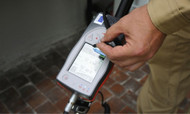3 Types of Radiation Detectors Commonly Used
Posted by William Kimmell on 10th Aug 2021
When you need to monitor radiation levels in a work space, various tools are available. All of these tools work toward the same overall goal, but in different ways. Suffice it to say, companies should know the variety of detectors on the market before choosing one at random. Read the guide below to find three types of radiation detectors commonly used in hazardous work environments.
Gas-Filled Detectors
Gas-filled radiation detectors, such as the Geiger–Müller detector, are among the most common instruments that professionals use for detecting radiation. As the name suggests, these devices contain a gas that assists with monitoring and detecting harmful radiation. As radiation enters the device, it makes contact with the gas inside. The contact between both materials causes the gas to ionize, which allows the device to register the electrical charge.
Scintillators
Another one of the top types of radiation detectors commonly used in work areas is the scintillator. Similar to gas-filled devices, scintillators translate a reaction between photons and the detector material to showcase how hazardous the air is at the moment. When radiation particles pass through a scintillator, the device translates this interaction into a flash of light. You can find scintillators in gas or solid form, both of which successfully re-emit photons as visible light to ensure that personnel is aware of radiation present in the environment.
Solid-State Detectors
Solid-state radiation detectors offer companies detailed reports regarding x-ray and gamma radiation levels. These devices detect radiation with the help of semiconductors, which can come in n-type and p-type forms. The n-type and p-type work together to register how much radiation is present between the semiconductors by first registering any ionization taking place in the device.
As you can see, all three of these detector types have similar attributes as well as stark differences. Thanks to this helpful guide, sifting through the various radiation detectors for sale will hopefully be less daunting.

